Onion seeds: growing technique and care
In the popularity rating of amateur gardeners, onions have long and firmly been in the lead in many positions. This is understandable - the reputation of the vegetable crop is impeccable. In cooking, onions are involved in the preparation of most dishes. His medical merits are undeniable: the useful and medicinal properties of the plant have been known since the time of Hippocrates. And all this with a relatively simple, albeit time-consuming, maintenance technique. In addition, growing onions is an economically profitable undertaking. Especially if you prefer seeds to the traditional method of planting with onion sets. Add to this a variety of varieties and high yields and we get an ideal product worthy of occupying a couple of beds on any garden plot.
Content:
- The appearance of onions and their seeds
- Growing methods from seeds
- The technique of growing onions for seeds
- Protection against diseases and pests
- Harvesting and storage of seeds
The appearance of onions and their seeds
Onions are an ancient plant, widespread in the mountainous regions of many countries. Onions grew in Afghanistan, China, Iran, Turkmenistan. In Russia, the plant appeared in the twelfth century.
A feature of onions is their superficial stringy root system.
It is able to form a protective dry shell, which is necessary for a plant under unfavorable drought conditions to enter a dormant state.
So the plant adapted to the mountain growing conditions, which are characterized by a special microclimate and a relatively thin layer of soil that forms after the transformation of rocks.
In nature, onions are considered a perennial plant, in culture - biennial, producing an onion in the first year, and seeds in the second.
Bow characteristic:
- The plant consists of a green part - feathers and a bulb - turnip.
- Both parts are used in food.
- The bulb grows up to 15 centimeters in diameter. Covered with yellow or purple outer scales.
- Internal white, lilac or greenish scales are located on the stem.
- In their cavities, they contain buds, from which daughter bulbs are subsequently formed.
- Onion leaves are represented by green flower arrows in the form of hollow tubes. Their height reaches one and a half meters.
- Feathers are crowned with inflorescences in the form of umbrellas.
- The boxes - the fruit of the plant - contain six seeds.
Characteristic features of onion seeds:
- Black color. Therefore, they are also called nigella.
- Wrinkled texture.
- Triangular shape.
- Hard shell.
- Small size. Thirty pieces weigh approximately 100 grams.
- Slow germination. The seeds require an average of 20 days.
The numerous varieties of onions are classified into three types based on their taste:
- Sharp.
- Semi-sharp.
- Sweet.
It is important to note that not all types of onions are best grown by seed.
Growing methods from seeds
In addition to dividing vegetatively with bulbs, onions are propagated by seeds.
There are 3 main ways to grow from seed:
- Preliminary seedling preparation... It needs to be planted in February, and it is better to transfer it to the garden in mid-April.
- Spring sowing directly into the ground. The seeds are planted in early spring after the soil has thawed. This gives them enough time to mature in one year.
- Sowing in the winter.Sowing in frozen soil is important here to prevent nigella germination in the fall.
For successful cultivation and quick emergence, the planting material must be processed.
Here's a list of the steps to take:
- Check the quality of the seeds. To do this, wrap 10-15 pieces in wet gauze and leave them for 15-20 days. Normal germination is the germination of about 80% of the seeds.
- Treat the seeds with a solution of potassium permanganate. This will prevent the growth of fungus.
- Soak in water for 15 hours or in a special solution to stimulate accelerated growth for a day. Prepare the solution at the rate of one tablespoon of water per gram of the product.
- Dry the seeds before planting for thirty minutes in an open area.
- In addition, it is necessary to prepare the soil by enriching it with mineral fertilizers, compost and peat.
The technique of growing onions for seeds
Usually shared planting onions on feathers and onion. It is recommended to plant the suitable varieties separately in different beds. Having received a good generous harvest of onions, you need to prepare planting material for the next season.
The cycle of growing onions for seeds lasts 3 years:
- In the first season, bulbs - sets are obtained from densely planted seeds.
- Then the mother plant is extracted from the seed.
- In the third season, seeds are removed from the uterine bulbs.
Although in the southern regions it is possible to immediately grow uterine onions from seeds, skipping the cultivation of sets.
Optimal conditions for the growing phase: air temperature not lower than 21 degrees Celsius and humidity 50%.
So the plant is less likely to infection with a dangerous disease - peronosporosis or in another way false powdery mildew.
It is better to choose a place for planting onions on seeds on a hill, open to the through wind. The ideal option is a slope on the south side, protected from the north by artificial barriers or live plantations. Potatoes, wheat, cucumbers - these crops can precede onions in the selected area. It is worth avoiding replanting the culture in the same place earlier than after 5 years.
Care must be taken to isolate the seed onion. In order to avoid over-pollination of the plant and loss of purity of the variety, it is recommended to place the plant away from other types of onions and even from an identical variety of mother plants and sets. The minimum distance is 250 meters in an open area and 500 meters in a closed one.
Thus, you can prepare the planting material yourself and do it quite simply.
Protection against diseases and pests
Protecting an onion is a difficult and responsible task in the process of caring for it.
The most common pests:
- Onion fly.
- Root mite.
- Weevil.
- Stem nematode.
The most common diseases:
- Peronosporosis.
- Onion smut.
- Rot of the bottom.
- Gray neck rot.
Onions damaged by these insects and diseases are considered unfit for storage for a long time.
In addition to the measures already listed - isolation, annual fruit change on the site, disinfection of seeds, there are a number of other mandatory requirements:
- You can't plant onions near water bodies.
- Do not forget about preventive spraying of plants. Although, the use of pesticides has long been a controversial issue.
- It is important to notice plant damage in time. Carefully dispose of damaged bulbs.
- Disinfect the storage.
- Avoid overdose of nitrogen in the soil. Saturation of the soil with potassium and phosphorus increases the onion's resistance to many diseases and harmful insects.
- Timely carry out seed dressing by dry dusting. For these purposes, bazudin is used.
- Avoid the appearance of weeds in the garden.
As you can see, the issue of protecting the onion and its seeds requires increased attention. It is on the timely discovered problems and preventive measures that the sowing yield depends.
Harvesting and storage of seeds
Onion seeds do not ripen at the same time:
- First fruits ripen the top of the umbrella and then the bottom.
- Seeds are harvested in late summer - the first week of autumn.
- The boxes are cut off along with the arrows or the bush is completely dug out.
- Tied in bunches and hung out to dry. It is better to hang them in a draft, and lay paper or cloth under them in order to collect the fallen seeds from the burst fruits later.
- After drying, after about a month, the bundles need to be threshed.
- Then the seeds are sifted and settled in water. This is done to reject low-quality seeds and the remains of inflorescences.
- Full seeds will settle at the bottom. The rest will float up and can be drained with water. However, for no particular reason, it is best not to clean the seeds in water, as this method can reduce their germination.
- Full-fledged seeds are dried again, undergoing constant stirring, to a state of 10% moisture. In this form, they are able to survive and be suitable for sowing for three years.
You need to store the seeds in a clean container.
Flaw growing method onion seeds is that the seeds do not always have enough time to ripen, and the plant continues to grow until harvest. Their maturation is delayed by the early onset of cold weather. Then you have to dig up the seed onions and place them under the canopy. The seeds can ripen on their own, due to the nutrients contained in the plant.
The film covering of the bow directly on the site will also help to cope with the problem. Another option is to plant seeds by winter way or seedlings.
Growing onions by seed has a number of advantages. So, the gardener gets a better harvest and has an almost unlimited choice of plant varieties. Although it is a laborious task, the result is worth the cost.
More information can be found in the video.



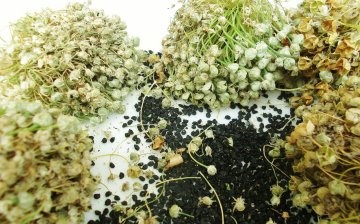
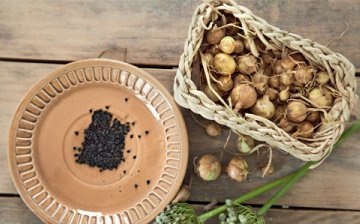
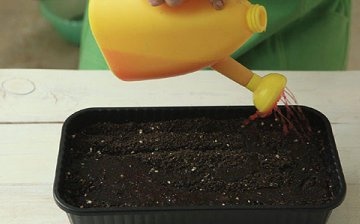
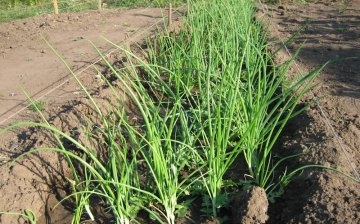
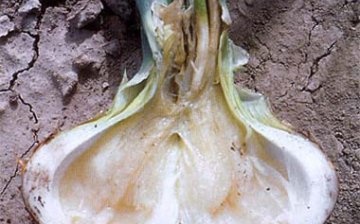
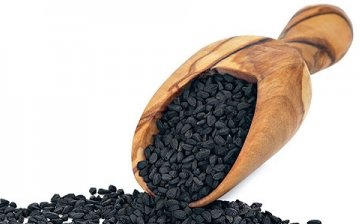






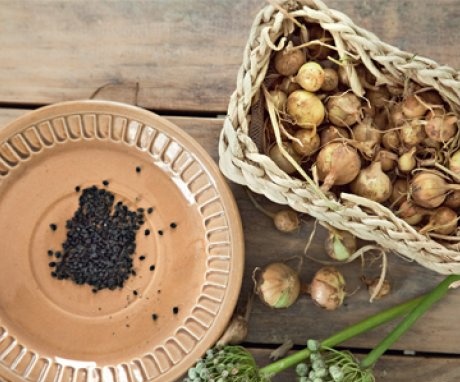
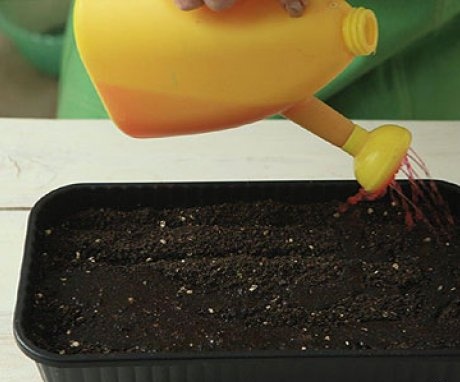
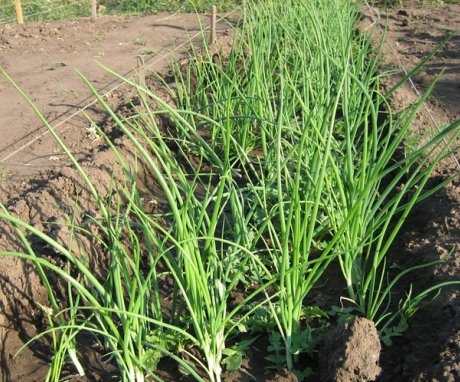


I usually don't have any problems with onions and never had any problems, I plant with both bulbs and seeds, all options give good results that are expected. This is probably the only plant that has no problem.